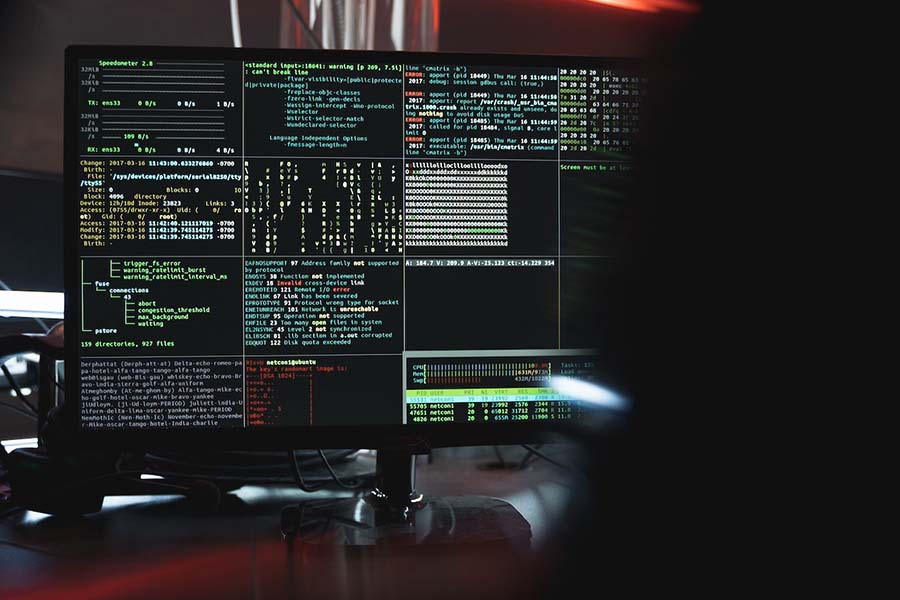AI in Cybersecurity: Safeguarding Our Future Digital World

Introduction
In today’s increasingly connected world, the significance of cybersecurity has never been greater. With rapid advancements in technology and the widespread adoption of the internet, our lives and businesses have become more digital than ever before. As a result, the potential for cyberattacks and security breaches has grown exponentially. As a result, cybersecurity is no longer a luxury; organisations and individuals alike must protect their sensitive data, intellectual property, and digital identities.
The rise of sophisticated cyber threats demands innovative solutions to combat them. Traditional security measures need to be revised to keep up with the constantly evolving nature of cyberattacks. Artificial intelligence (AI) is emerging as a powerful tool in the battle against cybercrime, providing the ability to detect, analyse, and respond to threats more efficiently and effectively than ever. By harnessing AI’s potential, we can create more robust cybersecurity systems capable of proactively defending against the ever-increasing array of cyber threats.
“According to Cybersecurity Ventures, global cybercrime costs are expected to reach $10.5 trillion annually by 2025, up from $3 trillion in 2015.”
— Cybersecurity Ventures
This blog article aims to provide a comprehensive understanding of the role of artificial intelligence in cybersecurity. We will explore the current cybersecurity landscape, delve into the fundamentals of AI and how it enhances cybersecurity efforts, and discuss various AI-powered solutions available today. Additionally, we will examine the challenges and limitations of AI in cybersecurity and consider emerging trends and the future of AI in the field. By the end of this article, readers will have a solid understanding of how AI is revolutionising cybersecurity and its potential for creating a safer digital world.
The Landscape of Cybersecurity
The Evolution of Cyber Threats
In the early days of the internet, cyber threats were relatively simple. Common attack vectors included viruses, worms, and basic phishing schemes that targeted individual users or small networks. As a result, cybersecurity professionals primarily relied on signature-based detection methods to identify and neutralise threats. These methods involved the creation of digital signatures for known malware and comparing incoming files or data to these signatures to detect threats.
However, signature-based detection had several limitations. First, it was reactive, requiring knowledge of existing threats to create the necessary signatures. This meant that new, unknown threats often went undetected. Second, cybercriminals quickly learned to adapt, creating polymorphic malware that changed its code to avoid detection by signatures. Finally, signature-based detection was resource-intensive, as it required constant updates and the maintenance of large databases of signatures.

As technology has advanced, so too have the methods and tools used by cybercriminals. As a result, today’s cyber threats are more sophisticated, targeted, and diverse than ever. Some of the most concerning trends include:
Advanced Persistent Threats (APTs): APTs are stealthy, long-term attacks that target specific organisations or industries. They often involve multiple stages and can remain undetected for months or even years.
Ransomware: Ransomware assaults involve encrypting a target’s data and requiring payment for the decryption key. Such attacks have grown increasingly widespread, affecting businesses, governments, and individuals.
Internet of Things (IoT) attacks: As the number of connected devices grows, so does the potential for cyberattacks. IoT devices often lack robust security features, making them vulnerable to attacks that can have widespread consequences.
State-sponsored cyber warfare: Nation-states increasingly use cyberattacks to pursue their geopolitical objectives, creating a new frontier for global conflict.
The Need for Improved Security Measures
Given the evolving threat landscape, more than traditional security measures are needed to protect against cyberattacks. Organisations and individuals must adopt more proactive, adaptive, and innovative approaches to cybersecurity. This includes using advanced technologies like artificial intelligence to detect and respond to threats more efficiently and effectively. In addition, there is a need for increased collaboration between the public and private sectors and the development of international norms and agreements to address the growing challenge of state-sponsored cyber warfare. We can work towards a more secure digital future for all by embracing these strategies.
Artificial Intelligence: A Game Changer in Cybersecurity
Fundamentals of AI in the Context of Cybersecurity
Machine learning, a branch of artificial intelligence, focus on creating algorithms that allow computers to learn and enhance their performance based on experience. In cybersecurity, machine learning can be applied to various tasks, such as detecting anomalies in network traffic, identifying suspicious user behaviour, or classifying malware. By analysing vast amounts of data, machine learning algorithms can identify patterns and correlations that may indicate a cyber threat, often with incredible speed and accuracy than human analysts.
” 69% of organisations believe they cannot respond to cyber threats without the use of AI.”
— Capgemini Research Institute
Some standard machine-learning techniques used in cybersecurity include:
Supervised learning: The algorithm is trained using labelled data, with input-output pairs provided by human experts. It then uses this training to make predictions on new, unlabeled data.
Unsupervised learning: The algorithm learns to identify patterns and relationships in unlabeled data without prior knowledge or examples.
Reinforcement learning: The algorithm learns through trial and error, receiving feedback through rewards or penalties to optimise performance.
Natural language processing (NLP) is another subset of AI focusing on the interaction between computers and human language. NLP enables computers to understand, interpret, and generate human language, making it a valuable tool for cybersecurity. For example, NLP can analyse text-based communication, such as emails or social media posts, to detect phishing attempts or malicious content. It can also process large volumes of unstructured data, such as threat intelligence reports, to extract relevant information and insights.
How AI Enhances Cybersecurity Efforts
AI-driven cybersecurity solutions can detect and analyse threats more effectively than traditional methods. For example, machine learning algorithms can identify complex patterns and anomalies in network traffic that may indicate an ongoing attack. At the same time, NLP can help detect phishing attempts by analysing the language used in suspicious emails. Furthermore, AI can process and analyse vast amounts of data in real time, enabling faster threat detection and response.
AI can automate many cybersecurity tasks, freeing up valuable time and resources for security professionals to focus on more strategic initiatives. For example, AI-powered security tools can automatically classify and prioritise threats, allowing analysts to focus on the most critical issues. Additionally, AI can automate routine tasks, such as monitoring network activity or updating threat intelligence feeds, reducing the workload for human analysts and improving overall efficiency.
One of the critical advantages of AI is its ability to learn and adapt continuously. As new threats emerge and existing ones evolve, AI-driven cybersecurity solutions can update their knowledge and improve their detection capabilities. This continuous learning allows AI-powered tools to stay ahead of cybercriminals and provide proactive protection against emerging threats. Moreover, AI can help organisations develop more adaptive security strategies by analysing historical data and identifying trends that may indicate future attacks.
AI-powered Cybersecurity Solutions
Intrusion Detection Systems
Intrusion detection systems (IDS) are essential for monitoring network traffic and identifying potential threats. AI-powered IDS leverage machine learning algorithms to analyse large volumes of data, detecting anomalies and suspicious patterns that may indicate a cyberattack. By continuously learning from the data, these AI-driven systems can adapt to evolving threats and provide more accurate, real-time detection of potential intrusions. This enables organisations to respond more effectively to threats, minimising the potential for damage.
AI-based Antivirus and Antimalware Programs
Traditional antivirus and antimalware programs rely on signature-based detection methods, which have limitations in detecting new or evolving threats. On the other hand, AI-based antivirus and antimalware programs employ machine learning algorithms to analyse the behaviour and characteristics of files rather than relying solely on known signatures. This allows for detecting previously unknown malware or variants and more efficiently identifying false positives and negatives. Additionally, AI-powered antivirus programs can adapt and improve their detection capabilities over time, providing more robust protection against emerging threats.

AI-driven Security Information and Event Management (SIEM) systems
Security information and event management (SIEM) systems collect and analyse data from various sources, such as network devices, servers, and applications, to identify and respond to security events. AI-driven SIEM systems incorporate machine learning and natural language processing to enhance their analytical capabilities, enabling them to identify more complex patterns and relationships in the data. This can lead to faster, more accurate threat detection and improved incident response. In addition, AI-driven SIEM systems can help organisations prioritise their security by automatically identifying the most critical threats and suggesting appropriate countermeasures.
The Role of AI in Data Protection and Privacy
As data breaches and privacy concerns continue to make headlines, organisations must prioritise data protection and privacy as part of their cybersecurity strategy. AI can play a crucial role in these efforts by providing advanced data protection solutions, such as:
Data encryption: AI algorithms can be used to develop more secure encryption methods, making it more difficult for cybercriminals to access sensitive data.
Data masking and anonymisation: AI can help organisations protect sensitive data by automatically identifying and masking personally identifiable information (PII) or other sensitive data elements. This ensures that privacy is maintained while allowing for data analysis and processing.
Privacy-preserving machine learning: AI techniques, such as federated learning or homomorphic encryption, enable organisations to perform machine learning on encrypted data, ensuring that sensitive information remains private while benefiting from the insights derived from the analysis.
By leveraging AI-driven solutions, organisations can enhance their data protection and privacy efforts, minimising the risk of data breaches and ensuring compliance with regulatory requirements.
The Challenges and Limitations of AI in Cybersecurity
Data Quality and Availability
One of the primary challenges in leveraging AI for cybersecurity is the quality and availability of data. AI algorithms require vast amounts of high-quality data to learn and improve performance. However, obtaining clean, accurate, and representative data can be complex, especially in cybersecurity, where sensitive information is often involved. Inadequate or biased data can lead to poor performance and flawed decision-making by AI-driven systems. Therefore, organisations must invest in data collection, processing, and management efforts to ensure their AI-powered cybersecurity solutions are practical and reliable.
Computational Requirements
AI-driven cybersecurity solutions often require significant computational resources to process and analyse large volumes of data in real time. This can be a challenge for organisations with limited infrastructure or budget constraints. Investing in high-performance computing infrastructure, such as GPUs or cloud-based services, is necessary to realise AI’s potential in cybersecurity fully. Organisations must also consider these computational resources’ energy consumption and environmental impact and explore energy-efficient alternatives where possible.
“AI-driven security solutions can help organisations save an average of $2.5 million per year on cyber defense.”
— Ponemon Institute
The Risk of AI-generated Cyber Attacks
As AI technology advances, so does the potential for AI-generated cyberattacks. Cybercriminals increasingly use AI and machine learning tools to develop more sophisticated attacks, automate operations, and evade detection. For example, AI-driven algorithms can create compelling phishing emails, generate real deep fake videos, or discover new vulnerabilities in software systems. This raises concerns about the potential for an AI-driven arms race between cybercriminals and cybersecurity professionals, with both sides continuously developing new technologies and tactics to outmaneuver each other.
Ethical Considerations and Potential Misuse
Integrating AI in cybersecurity raises several ethical considerations and concerns about potential misuse. For example, AI-driven surveillance and monitoring tools can provide significant benefits for cybersecurity but also pose risks to individual privacy and civil liberties if used irresponsibly or without appropriate safeguards. Additionally, AI-powered offensive cyber capabilities, such as autonomous hacking tools or AI-generated malware, raise questions about the ethics of using AI for cyber warfare and the potential consequences of these technologies falling into the wrong hands.
Organisations must carefully consider the ethical implications of their AI-driven cybersecurity solutions and implement robust policies and oversight mechanisms to prevent misuse and ensure compliance with relevant laws and regulations. By addressing these challenges and limitations, we can work towards harnessing the full potential of AI in cybersecurity while minimising potential risks and unintended consequences.
The Future of AI in Cybersecurity
Emerging Trends and Technologies
Quantum computing has the potential to revolutionise many fields, including cybersecurity. By leveraging the principles of quantum mechanics, quantum computers can solve complex problems much faster than classical computers. This has significant implications for cryptography, as quantum computers could break current encryption methods, rendering data protection mechanisms vulnerable. On the other hand, quantum computing also offers the opportunity to develop new, more secure encryption techniques, such as quantum-resistant cryptography or quantum key distribution. As quantum computing technology advances, it will play an increasingly important role in shaping the future of cybersecurity.
As technology continues to evolve, we witness the convergence of AI, the Internet of Things (IoT), and blockchain in cybersecurity. IoT devices are becoming more integrated into our daily lives, generating vast amounts of data and creating new attack surfaces for cybercriminals. AI can analyse this data and detect potential threats, while blockchain technology can provide secure, decentralised data storage and communication methods. Combining these technologies can create robust, innovative solutions for cybersecurity challenges, such as decentralised, tamper-proof identity management systems or secure, automated IoT device updates.

Building a Proactive and Adaptive Cybersecurity Framework
The future of AI in cybersecurity lies in developing proactive and adaptive security frameworks that can respond effectively to the constantly evolving threat landscape. This involves using AI-driven tools to continuously monitor, analyse, and learn from security-related data, enabling organisations to anticipate and prevent potential attacks before they occur. By integrating AI into their cybersecurity strategies, organisations can move away from reactive security measures and towards a more proactive, adaptive approach that minimises the risk of cyberattacks and ensures the resilience of their digital infrastructure.
The need for Collaboration between Industry, Academia, and Government
Addressing the complex challenges posed by AI-driven cybersecurity requires collaboration and knowledge sharing between various stakeholders, including industry, academia, and government. Organisations can pool resources, share expertise, and develop innovative solutions to emerging cybersecurity threats by fostering partnerships and collaboration. This may involve the creation of research centres or consortiums focused on AI and cybersecurity, public-private partnerships, or international agreements on norms and standards for AI-driven cyber defence.
Moreover, a collaboration between these stakeholders can help bridge the skills gap in cybersecurity, as AI-driven solutions require a workforce with a unique combination of computer science, data analysis, and cybersecurity skills. By investing in education and training programs, organisations can cultivate the talent needed to harness the power of AI in cybersecurity and build a more secure digital future for all.
Conclusion
Throughout this article, we have explored the role of artificial intelligence in cybersecurity, including its applications in threat detection, data protection, and privacy. We have also discussed the challenges and limitations of AI in cybersecurity, such as data quality, computational requirements, and ethical considerations. Finally, we looked at emerging trends and technologies, the importance of building proactive and adaptive security frameworks, and the need for collaboration between various stakeholders to address the complex challenges posed by AI-driven cybersecurity.
With the continuous evolution and increasing sophistication of cyber threats, AI plays a more significant role in defining the future of cybersecurity. Utilizing advanced machine learning algorithms and natural language processing methods, AI-powered solutions offer enhanced, real-time defence against cyberattacks, automate mundane tasks, and help organizations focus on their security priorities. As our world becomes more interconnected and reliant on data, the significance of AI in cybersecurity is set to expand further.
In light of the growing significance of AI in cybersecurity, organisations and individuals must embrace AI-powered solutions and invest in the necessary infrastructure, talent, and collaborative initiatives to harness the full potential of this technology. By adopting AI-driven cybersecurity tools, organisations can improve their threat detection and response capabilities, enhance their data protection and privacy efforts, and build more resilient digital infrastructures. Similarly, individuals can take steps to educate themselves about AI-driven cybersecurity solutions and adopt best practices for protecting their personal data and online privacy.
As we navigate the ever-evolving landscape of cyber threats, AI-powered cybersecurity solutions will ensure a safe and secure digital future for all.
Be sure to check out our other related posts if you enjoyed this one:
- The Rise of Collaborative Robots: Transforming Industries
- Unmasking Cyber Secrets: The Art of Deception Revealed!
- Decoding Cyber Threats: The Social Engineering Menace
- Unlock the Ultimate Quest: Ready Player One’s Audio Adventure!
- Revolutionising Wellness: Metaverse Therapy Unleashes Mental Liberation!
- Code Mastery Unleashed: Transform Your Skills with Clean Code by Robert C. Martin! 🚀
- Top Must-Have Tech Gadgets for Kids – Unbelievable Fun!
- Mastering Crypto Trading: Proven Strategies
- Unveiling Ethereum 2.0: Advancements & Impact
- AI Transforms E-Commerce: A Digital Revolution
If you enjoyed this blog post, subscribe for updates and stay tuned for our latest tech insights.
Credits
- Featured image by standret on Freepik.
- The landscape of cybersecurity photo by Tima Miroshnichenko on Pexels.
- AI-powered cybersecurity solution image by rawpixel.com on Freepik.
- The future of AI in cybersecurity photo by Tima Miroshnichenko on Pexels.









